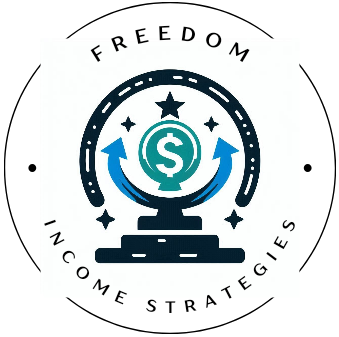When it comes to building wealth, investors often face a crucial decision: should they focus on dividend investing or growth investing? Each strategy offers its own set of advantages and caters to different financial goals. In this post, we’ll break down the key differences between these two approaches to help you determine which one aligns best with your investment objectives.
Understanding Dividend Investing
Dividend investing revolves around purchasing stocks from companies that regularly distribute a portion of their earnings to shareholders in the form of dividends. This strategy is attractive to investors looking for consistent income, particularly in the form of cash payouts. Dividend-paying stocks are typically established companies with a history of profitability and stability.
Key Characteristics of Dividend Stocks:
- Income Generation: Dividend stocks provide regular income, making them popular among retirees or those looking for passive income.
- Lower Volatility: Dividend-paying companies tend to be more stable and less prone to large price swings.
- Focus on Income: The primary goal for dividend investors is income generation rather than capital appreciation.
Understanding Growth Investing
In contrast, growth investing focuses on buying shares of companies that are expected to grow at an above-average rate compared to other firms. Growth stocks usually don’t pay dividends, as these companies prefer to reinvest earnings back into their business for expansion. The goal here is capital appreciation — buying low and selling high over time.
Key Characteristics of Growth Stocks:
- Capital Appreciation: Growth investors look for stocks that will increase in value over time, leading to larger profits when sold.
- Higher Volatility: Growth stocks can experience significant price fluctuations as the market reacts to the company’s performance and future prospects.
- No Immediate Income: Unlike dividend stocks, growth stocks do not provide regular cash payouts, so investors rely on selling shares for profit.
Pros and Cons of Dividend Investing
Dividend investing has its clear advantages, especially for those seeking reliable income. However, it comes with certain trade-offs.
Pros:
- Steady Income: Dividend stocks provide a reliable income stream, regardless of market conditions.
- Less Volatility: Dividend-paying companies are often more stable, which can make this strategy less risky for conservative investors.
- Reinvesting Dividends for Growth: Through dividend reinvestment plans (DRIPs), investors can compound their returns over time.
Cons:
- Lower Growth Potential: Dividend-paying companies are typically more mature, so they may not offer the same growth potential as younger, expanding firms.
- Tax Implications: Dividends are subject to taxes, which can eat into returns, especially for those in higher tax brackets.
Pros and Cons of Growth Investing
While growth investing offers the potential for substantial gains, it also carries more risk.
Pros:
- High Growth Potential: Growth stocks offer the possibility of significant capital gains as the companies expand.
- Reinvestment of Profits: Growth companies reinvest their earnings to fuel further growth, which can lead to exponential stock price increases.
Cons:
- Higher Volatility: Growth stocks can be more volatile, leading to larger price swings and potential losses.
- No Income: Growth investors do not receive regular payouts, meaning they must rely solely on stock price appreciation for returns.
Which Strategy Is Right for You?

The decision between dividend investing and growth investing depends largely on your financial goals, risk tolerance, and investment horizon.
Consider Dividend Investing If:
- You Want Regular Income: Dividend stocks are ideal for those who need consistent cash flow, such as retirees or income-focused investors.
- You Prefer Lower Risk: Dividend-paying companies are often more stable, making them a better choice for conservative investors.
- You Have a Long-Term Horizon: Reinvesting dividends can help you take advantage of compounding returns over the long term.
Consider Growth Investing If:
- You Seek Higher Returns: Growth investing can offer substantial capital gains, especially if you identify companies with significant upside potential.
- You Can Handle Volatility: Growth stocks can be more volatile, so this strategy is better suited for investors who can tolerate larger fluctuations in portfolio value.
- You Have Time on Your Side: Younger investors with a longer time horizon may benefit from the potential of growth stocks, as they can afford to ride out market volatility.
A Blended Approach
For many investors, the choice between dividend investing and growth investing doesn’t have to be either-or. A blended approach can provide the best of both worlds, offering income stability from dividend-paying stocks alongside growth potential from high-performing companies.
Using platforms like Seeking Alpha can help you stay informed on both dividend and growth stocks. The platform offers in-depth research and analysis that caters to both types of investors, helping you strike the perfect balance between income generation and capital appreciation.
Monitoring and Adjusting Your Strategy
Regardless of which strategy you choose, it’s important to regularly assess and adjust your portfolio. Economic conditions, company performance, and personal financial goals may shift over time, and your investment strategy should evolve accordingly.
Dividend investors may need to reallocate if a company cuts its dividend or faces financial trouble, while growth investors may want to sell shares if a company’s growth prospects begin to decline.
Conclusion: Choose What Aligns With Your Goals
Dividend investing and growth investing each offer unique advantages depending on your personal financial objectives. Dividend investing can provide steady income and stability, while growth investing offers the potential for higher returns. By understanding the key differences and assessing your goals, risk tolerance, and time horizon, you can make an informed decision that sets you on the path to financial success.
Whether you lean towards dividend or growth, or perhaps a combination of both, aligning your strategy with your financial goals is the key to long-term investing success.
Here’s a little transparency: Our website contains affiliate links. This means if you click and make a purchase, we may receive a small commission. Don’t worry, there’s no extra cost to you. It’s a simple way you can support our mission to bring you quality content.

